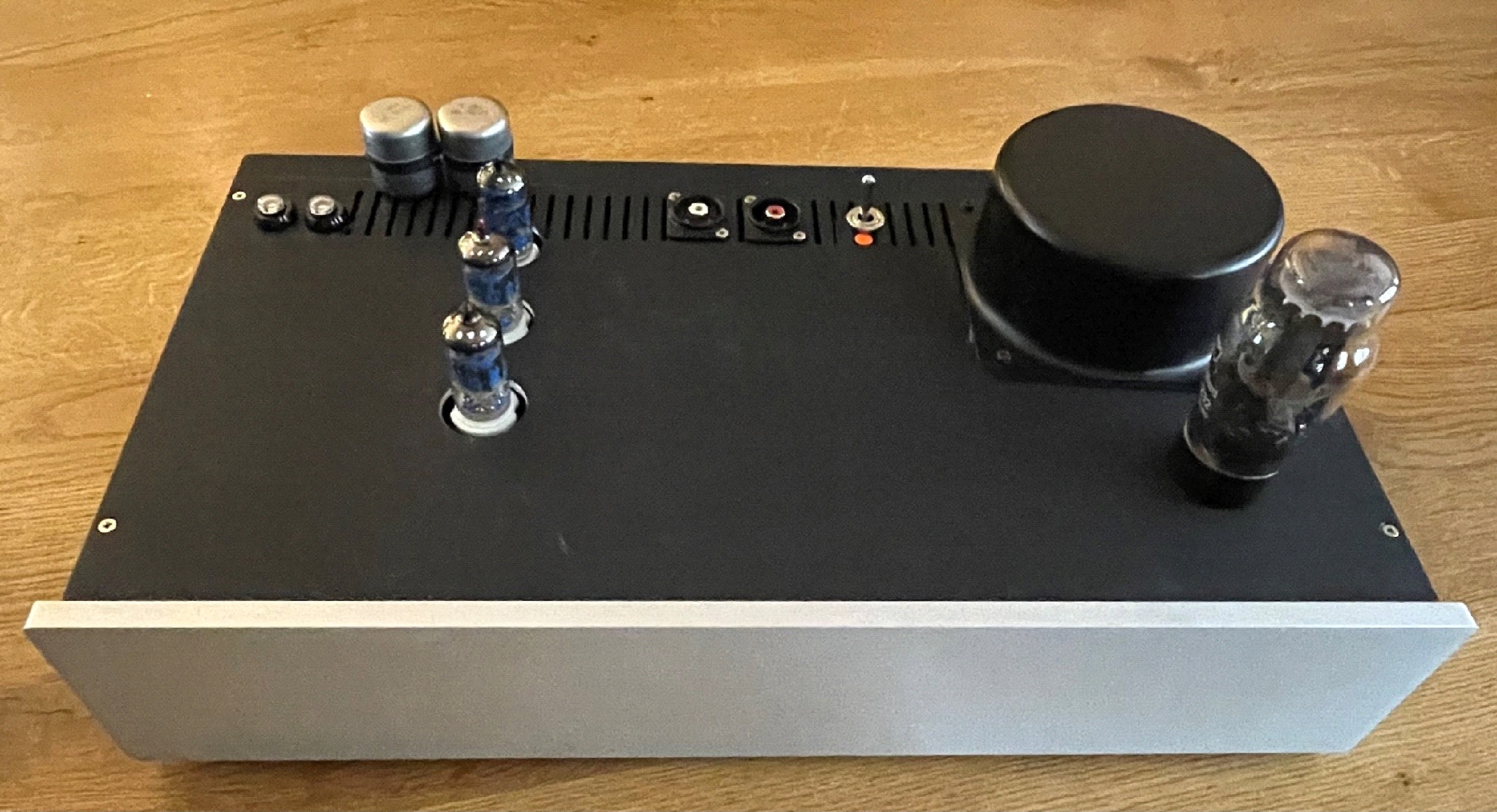In an analogue audio system the phono preamplifiers fulfils two extremely important roles. Firstly, he has to increase the tiny signal from the turntable needle – or more precise: the pick-up – sufficiently for the following amplifiers. Aside from that, it equalises the phono signal. For size reasons, on the record certain frequencies are compressed in an exact, predefined mode, meaning they are registered in a distorted manner. This conversion is reversed by the phono preamplifier in its so called RIAA section.
The challenge hereby is to process the phono signal without creating any additional noise. The tiny signal is very sensitive and any, however minimal, noise signal will successively be equally amplified as the musical signal and will end up comparatively loud, thus disturbing. Noise signals are mainly humming or buzzing.
Our phono preamplifier is based on the circuit of the popular EAR 834 P, a classic from the legendary developer Tim de Paravicini. It is rightly famous as a serial device, but possesses a potential far larger than the quality of serial production shows.
One important feature of our phono preamplifier is its compatibility towards multiple or pick-up systems. Our phono preamplifier possesses two moving magnet inputs and one input for moving coil pick-ups. By simply using parallel input jacks and correspondingly altered plugs, all inputs can be reconfigured to the optimal values for input resistance and capacitance. The moving coil signal is pre-preamplified with the same 1:10 input transformers from Haufe, which are used in the famous EMT decks.
The construction mostly follows the extraordinary instruction manuals in the forum Lencoheaven. We paid attention to very short signal paths and used mostly high-end components. For example, instead of the common electrolytic capacitors in the amplification and RIAA section, we used high-end film capacitors, which on the one hand are much more expensive and need a lot more room but on the other hand significantly contribute to a precise reproduction and a quiet background. Diverging from the variants discussed in the forum our power supply uses valve rectification. Here we chose the assembly kit from Pure Dynamics. Pure Dynamics is a highly recommended supplier for high-end amplifier and speaker kits, as well as premium ready-made devices. Most noteworthy are the elaborate construction manuals and the personal support of the very friendly owner Georg Ruppert.
In the preamplifier and equalizer line, three selected NOS (new goods from old stock) ECC83 tubes from Rainer Röder are used. The rectifier tube is a NOS Mullard GZ32 from Thorsten Sand. Both retailers provide excellent merchandise and first class support. Compared to other suppliers, tubes from old stock may cost a little more at Rainer Röder, but his selections and tests are unrivalled.
Our EAR 834 Clone excels at extremely low noise level, highly nuanced and spatially, three dimensional reproduction, which can most fittingly be described as particularly realistic and musical.
The chassis, as do all of our used self-assembly enclosures to date, stems from Modushop. Here, you can also expect first-class service including the individualized design of pieces at very reasonable prices.

